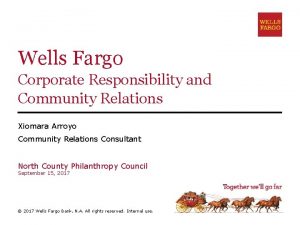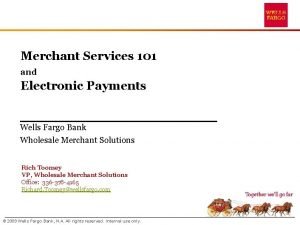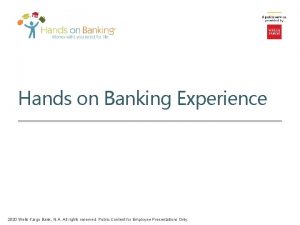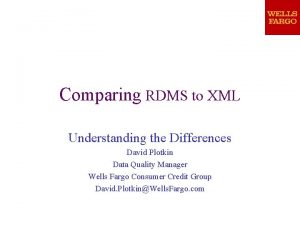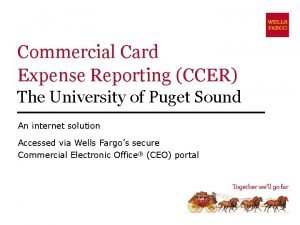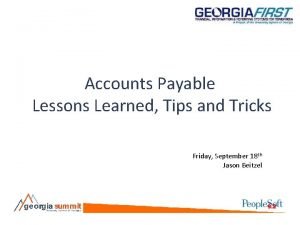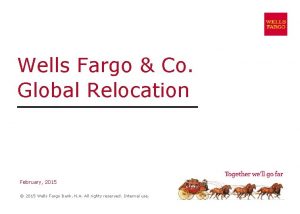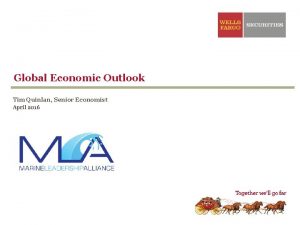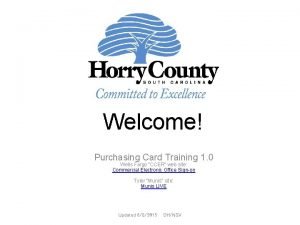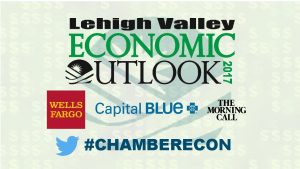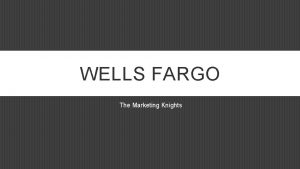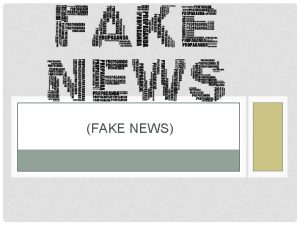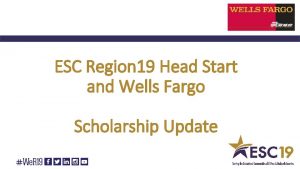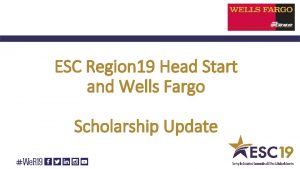Character and Ethics The Wells Fargo Fake Accounts










![Action at Wells Fargo • The LDP requires “people of honor [to] lead with Action at Wells Fargo • The LDP requires “people of honor [to] lead with](https://slidetodoc.com/presentation_image_h2/66789c553dfb252db872a44ec5cd21c9/image-11.jpg)



- Slides: 14

Character and Ethics: The Wells Fargo “Fake Accounts” Scandal CH 1‐ 2

Wells Fargo Fake Accounts Scandal • Beginning around 2011, Wells Fargo customers started noticing being charged unanticipated fees and receiving unexpected credit or debit cards or lines of credit • This was the result of a corporate strategy to “cross‐sell”– to urge customers to sign up for more and more additional products and services (savings account, checking account, auto loan, overdraft protection, credit card) • The Wells Fargo goal became to “Go for Gr‐eight, ” achieving an average of eight banking products per customer when most banks had an average of two or three • Carrie Tolstedt was accused of running the Community Banking Division as a “sales organization, like department or retail stores, rather than a service ‐oriented financial institution”

Wells Fargo’s Fake Account Scandal • In order to collect unwarranted fees and meet internal sales quotas, Wells Fargo employees: • Opened deposit accounts and transferred funds without customer authorization, sometimes resulting in insufficient funds fees for customers. • Applied for credit card accounts in costumers’ names without their knowledge or consent. • Customers were hit with annual fees, in addition to finance and interest charges and late fees for some consumers. • Issued and activated debit cards, creating PINs for customers, without their consent. • Created phony email addresses to enroll consumers in online‐banking services.

Wells Fargo Fake Accounts Scandal • Results • 5, 300 employees fired (between 2011‐ 2016) • 3. 5 million accounts affected (as of October 2017) • Reportedly facing a billion dollar federal fine (as of April 2018) • Key Players • John Stumpf, CEO And Chairman, 2010‐ 2016 • Timothy Sloan, Chief Operating Officer, 2015‐ 2016 (then made CEO) • Carrie Tolstedt, Head of the Community Banking Division (retired in 2016) • https: //www. youtube. com/watch? v=6 d 9 SIYnt. Il. E (1: 18 minutes) • https: //www. youtube. com/watch? v=yt. X 3 f 6 AIc. R 0 (4: 44 minutes) When Tolstedt retired early in wake of the scandal, Stumpf called her “a standard‐ bearer of our culture” and “a champion for our customers. ”

Wells Fargo’s Organizational Culture • A special board review chaired by Wells Fargo Chairman Stephan Sanger found that: • The “sales‐oriented culture or a decentralized corporate structure” that “unfortunately coalesced and failed dramatically” • “Tolstedt resisted change to the Community Bank’s sales model even when confronted with evidence that it led to low‐quality sales and improper sales practices. … Instead, she reinforced the high‐pressure sales culture. ” • “Even when challenged by their regional leaders, the senior leadership of the Community Bank failed to appreciate or accept that their sales goals were too high and becoming increasingly untenable. ” • “It was convenient instead to blame the problem of low quality and unauthorized accounts and other employee misconduct on individual wrongdoers. ” • “Effect was confused with cause. When Wells Fargo did identify misconduct, its solution generally was to terminate the offending employee without considering causes for the offending conduct or determining whethere were responsible individuals who, while they might not have directed the specific misconduct, contributed to the environment that increased the chances of its occurrence. ”

Organizational Culture • From last LTP: • Organizational culture consists of shared attitudes, values, goals, and practices that characterize the larger institution over time • Leaders use culture to let people know they are part of something bigger than just themselves • There are three different levels of culture • Artifacts • What individuals can see on the surface • Shared values • The significant values, morals, and beliefs claimed to be especially important by leaders in the organization • Basic assumptions • How situations or problems within the organization are treated after repetition • What was the organizational culture at Wells Fargo? How does such a culture reflect the ethical character of the organization’s leaders? How does that impact the organization’s members?

The three levels of culture at Wells Fargo • Artifacts (What individuals can see on the surface) • In 2015, Wells Fargo was ranked No. 7 on Barron’s list of most respected companies • Tolstedt was ranked No. 27 on Fortune’s 2015 list of Most Powerful Women • Shared values (The significant values, morals, and beliefs claimed to be especially important by leaders in the organization) • A former employee to NPR “the whole foundation of Wells Fargo is cross‐sell, cross‐ sell” and another reported that as long as you hit your numbers nobody asked any questions. • Basic assumptions (How situations or problems within the organization are treated after repetition) • A law suit filed by Los Angles claims that Wells Fargo’s district managers discussed daily sales for each branch and employee “four times a day, at 11 am, 1 pm, 3 pm and 5 pm. ” • The lawsuit claims employees who failed to meet their daily goals were “reprimanded and told to do whatever it takes to meet individual sales quotas. ” • Employees who didn’t meet sales goals were subjected to “coaching sessions” that one employee told NPR were “like being called into the principal’s office. ”

Character • Character: The concepts undergirding this pillar represent a consistent thread that runs through all aspects of The Citadel Experience. This functional area instills the high moral standards represented by the college’s core values and the key behaviors manifested by principled leaders who act accordingly. Such leaders demonstrate integrity, truthfulness, and transparency in word and deed, building trust in those around them. Such leaders hold themselves and others accountable for these moral and ethical standards. Such leaders consistently uphold these standards into every aspect of problem solving and decision‐making, avoiding merely temporary, pragmatic, or convenient solutions (LDP pg 8) • “Holding team members accountable for results” is one of the eight behaviors. • What does accountability to moral and ethical standards mean in the context of character?

Accountability at Wells Fargo • While 5, 300 low‐ and mid‐level employees have been fired, no high‐level executives were • Senator Elizabeth Warren to CEO Timothy Sloan (who should have been supervising Tolstedt) during hearings in 2017: “At best, you were incompetent, and at worst, you were complicit. Either way, you should be fired. ” • The special board review attributed much of the failure to “a decentralized corporate structure” and concluded that when there was misconduct, the offending individual was fired without trying to find out if there were “responsible individuals who, while they might not have directed the specific misconduct, contributed to the environment that increased the chances of its occurrence” • The LDP requires leaders of character to “hold themselves and others accountable for these moral and ethical standards. ” • What are the advantages and disadvantages of a decentralized vs. a centralized organization structure? • How do leaders maintain accountability in decentralized organizations? • What part does establishing the proper culture and climate play? • What part do more tactical‐level checks and balances play? • To what extent should leaders be held accountable for the failures of their subordinates? How do leaders fulfill that responsibility?

Honor • Honor: Honor preserves the moral authority and trustworthiness leaders must earn to effectively influence others. People of honor lead with integrity and conduct themselves with the knowledge of being part of something larger than they are. A person of honor does the right thing the right way–even when no one is watching or when a personal cost is incurred. This value begins with personal adherence to the letter and the spirit of the Honor Code that “a cadet does not lie, cheat, or steal, nor tolerate those who do. ” In its more advanced stages, honor includes forging a unity of values that guides the action of all members in the organization. (LDP pg 4) • How do values guide leaders’ actions? How do leaders communicate their values to the organization and influence members to act based on them? What is a “compelling” vision and how do leaders communicate it to guide organizational action?
![Action at Wells Fargo The LDP requires people of honor to lead with Action at Wells Fargo • The LDP requires “people of honor [to] lead with](https://slidetodoc.com/presentation_image_h2/66789c553dfb252db872a44ec5cd21c9/image-11.jpg)
Action at Wells Fargo • The LDP requires “people of honor [to] lead with integrity and conduct themselves with the knowledge of being part of something larger than they are. ” As a value, it says that “honor includes forging a unity of values that guides the action of all members in the organization. ” • There is nothing inherently wrong with the “cross‐selling” sales model. • (If you buy a high‐end electronics item at a place like Best Buy they usually ask you if you also want the extended warranty) • (If you buy a hamburger at a place like Mc. Donald’s they usually ask you if you “want fries with it”) • But at Wells Fargo, the “sales‐oriented culture” led to “low‐quality sales and improper sales practices” and instead of correcting the high‐pressure sales culture, Tolstedt merely reinforced it • The phenomenon is not unique to the Wells Fargo fake accounts scandal: • There is nothing inherently wrong with killing the enemy in a war, but the body count mentality in Vietnam led to false reporting and an over‐reliance on attrition as a strategy • There is nothing inherently wrong with using standardized tests as one measure of student learning, but “high‐stakes testing” led to 12 educators in the Atlanta school system being convicted in 2015 of racketeering for feeding answers to students or erasing and changing answers on tests after they were turned in • What “unity of values” were present at Wells Fargo that allowed cross‐selling to become a culture of fraud? What actions resulted? • How can leaders ensure that the organization’s values are positive ones? How can those values be transformed into guides for action throughout the organization?

Character • Character: The concepts undergirding this pillar represent a consistent thread that runs through all aspects of The Citadel Experience. This functional area instills the high moral standards represented by the college’s core values and the key behaviors manifested by principled leaders who act accordingly. Such leaders demonstrate integrity, truthfulness, and transparency in word and deed, building trust in those around them. Such leaders hold themselves and others accountable for these moral and ethical standards. Such leaders consistently uphold these standards into every aspect of problem solving and decision‐making, avoiding merely temporary, pragmatic, or convenient solutions (LDP pg 8) • What are morals and ethics? To what extent can they be standardized across an organization? How is that done? What is the difference between having standards and acting on them? How do leaders minimize that inconsistency in themselves and the organization?

Moral and ethical standards at Wells Fargo Morals are “standards of behavior; principles of right and wrong” Ethics are “moral principles that govern a person’s behavior or the conducting of an activity” “Morals” and “ethics” are often used interchangeably While morals and ethics can be sources of endless philosophical debate, their biggest leadership impact is when they are put “in action” • Viktor Frankl is credited with saying, “Between stimulus and response, there is a space. In that space lies our freedom and our power to choose our response. ” • • • How do your morals and ethics positively occupy Frankl’s “space”? • How do they give us “freedom? ” Freedom to do what? Freedom from what? • How do they give us “power”? How is it power to do something positive? How is it power to overcome something negative? • The “stimulus” Wells Fargo received was customer complaints of fake accounts. Their “response” was to fire individual low‐ to mid‐level employees. They have been criticized for using Frankl’s space between stimulus and response to focus on effect rather than cause. What actions would have represented “looking at cause rather than effect”?

Preparing for the challenge • That space that Frankl talks about can refer to both the general and the specific • If we wait for a specific stimulus to begin the space, we can find ourselves in crisis decision‐making • If we begin now to form the basic moral and ethical standards we will call upon once the stimulus is presented, we have the opportunity to take a more deliberate approach • Consider these stimuli that may present themselves after graduation: • Your boss encourages you to manipulate inventory figures on a report. • You have the opportunity to take credit for an idea you got from a co‐worker. • You can use inferior materials on a construction project because you know the inspector will notice it. • Your friend asks you to cover for him when he misses a meeting to go play golf. • How is your Citadel experience already helping you morally and ethically fill Frankl’s space?
 Wells fargo community relations
Wells fargo community relations Wells fargo pos system
Wells fargo pos system Wells fargo budget worksheet
Wells fargo budget worksheet Wells fargo hierarchy
Wells fargo hierarchy Wells fargo identity theft repair kit
Wells fargo identity theft repair kit Wells fargo commercial card expense reporting system
Wells fargo commercial card expense reporting system Wells fargo corporate wellness
Wells fargo corporate wellness Wells fargo positive pay file format
Wells fargo positive pay file format Wells fargo relocation
Wells fargo relocation Accounttrax
Accounttrax Golden gate wells fargo card
Golden gate wells fargo card Tim quinlan wells fargo
Tim quinlan wells fargo Wells fargo pcard
Wells fargo pcard Wells fargo ohio
Wells fargo ohio Jay bryson
Jay bryson
